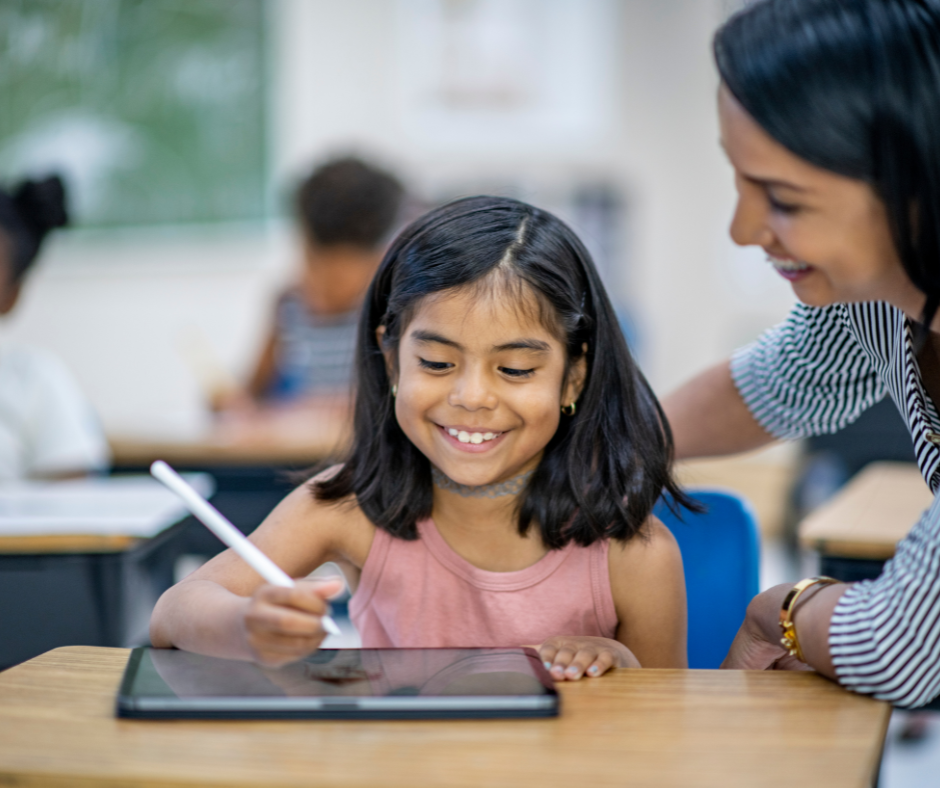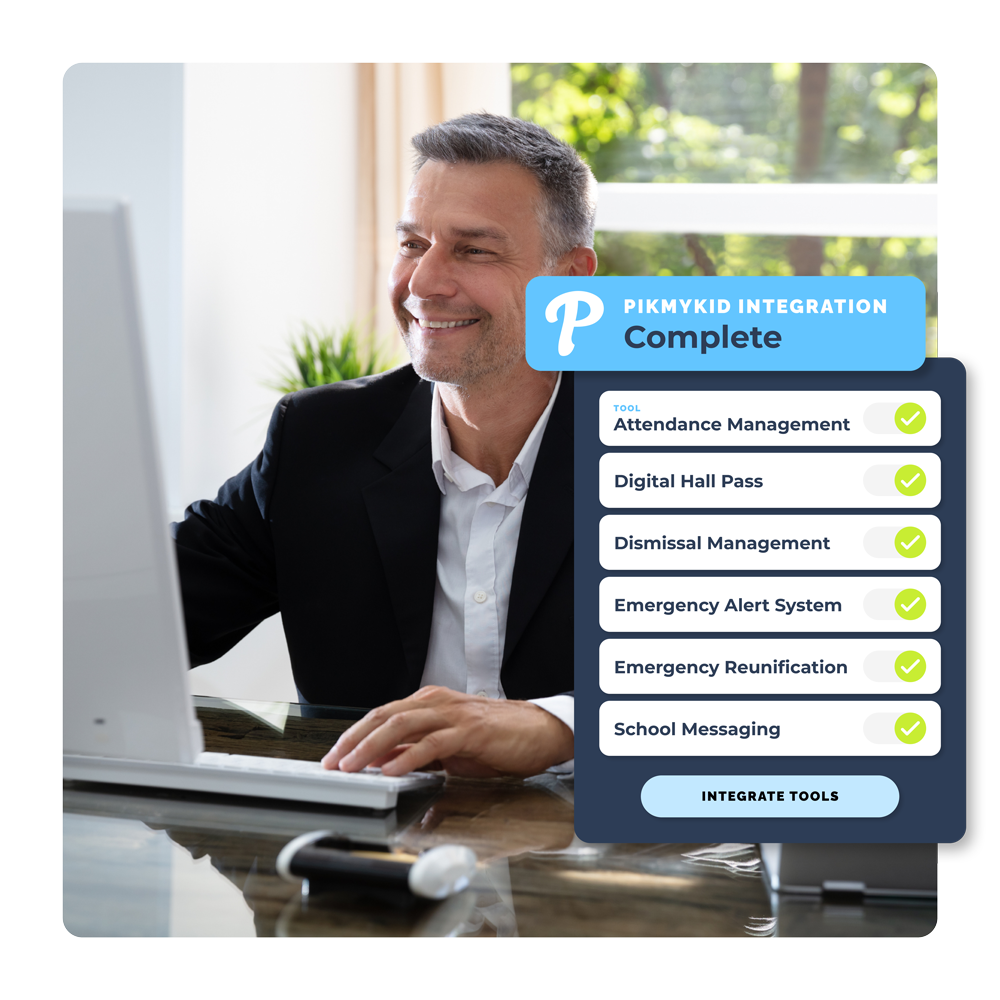Why EdTech is useful
EdTech, or Educational Technology, refers to the use of technology to support and enhance teaching and learning. It can be a useful tool for educators by assisting to engage students, personalize learning, keep them safe and improve student outcomes. When it comes to the instructional methods and tools we use in our classrooms, there are several goals that educators may have in mind when selecting them. Therefore, knowing the types of technology available and the benefits of each is important. Some key areas of focus in which EdTech can help include:
Promoting accessibility
There are a variety of tools that have features promoting accessibility. One example of this is Immersive Reader, which helps with language and reading skills, such as those with dyslexia. It can now be used with emerging technology such as augmented and virtual reality that enhances the learning experiences for students.
Personalized learning
The ability to provide customized learning experiences for all students by meeting their specific needs and abilities is essential. This can be accomplished through interactive tools, student-paced lessons and even artificial intelligence built-in to adapt in real-time based on responses provided by students.
Student engagement
Better student engagement produces better student outcomes. Interactive digital tools allow for more personalized instruction, so students feel more comfortable and confident, and thus become more interested and engaged in their learning.
Social-emotional learning (SEL)
The use of EdTech can help to facilitate the development of essential SEL skills such as self-awareness, self-management, and social awareness. Digital tools can facilitate collaboration between students, create a space for students to track their own growth, and also help them to set goals in their learning journey.
Data-informed
The use of EdTech also provides educators with real-time and accessible data to better understand student progress and performance in our classrooms. Access to this data can then inform our next steps for teaching and creating learning experiences.
Improve Safety
The safety of the students while they are at school is of the upmost importance for educators. EdTech can not only help keep students and educators safe at school but can also streamline daily and emergency operations allowing educators to focus all of their time on teaching, and the students on learning.

Types of EdTech for educators to explore
When it comes to technology, figuring out where to start can feel overwhelming. However, as with all methods and tools, when thinking about bringing technology to our classrooms, we want to focus on the purpose. Start with clear goals in mind. How will it impact student learning and what are the benefits for our work as educators?
As we consider how to best prepare students for the future, there is one thing that remains clear, regardless of what path the students follow, it will involve technology. Students will require a variety of skill sets to be prepared for whatever changes the future brings. The Jobs of Tomorrow Report provides valuable insight into the types of jobs that will be in demand. There is a predicted increase in jobs related to artificial intelligence, cloud computing, cybersecurity, data analytics, and more in these already emerging technology fields.
Regardless of the grade level or content area we teach, we can find useful resources to use with students as young as pre-K. When it comes to technologies such as artificial intelligence, or augmented and virtual reality, providing students a chance to learn in a more hands-on and self-directed manner will make all the difference. Students need opportunities to explore new ideas, take some risks in learning, push through challenges and failures, adjust and set new goals. Educators need to focus on key areas that will provide students with learning experiences that will best prepare them for the future.

Augmented and Virtual Reality (AR and VR)
AR and VR provide powerful opportunities for students to have greater control over their learning and engage with the content in a more personalized way. Students can use these technologies to explore outer space, travel around the world, and have hands-on experience with different places and objects. AR and VR can provide a more immersive and meaningful experience as students more closely connect with the content they are learning.
Artificial Intelligence (AI)
Because of the continued growth in and demand for skills in AI, we need to provide opportunities for all students to learn about and understand how AI works. Dave Touretzky, the founder of AI4K12 stated: “It’s important that children be given accurate information about AI so they can understand the technology that is reshaping our lives.” AI is used in our everyday lives and for students, understanding what it is, how it is used, and what the impact of AI might be in the future, are just a few of the many important aspects of AI that students need to understand.
Gamification
There are many digital tools available that “gamify” learning, which means adding games to learning taste to encourage participation. With gamification, or the use of game-based learning tools, students can be awarded points, receive badges, and have their names on the leaderboard. These features can help to increase motivation and engagement. An additional benefit of game-based learning tools in the classroom is that they can help with SEL. Students develop self-awareness as they work through the game and better understand their learning progress. They build self-management as they work through challenges and also build social awareness and relationships as they collaborate with their peers.
Safety and Emergency Platform
There are digital platforms which help schools to streamline their daily and emergency operations via, making them quicker and smoother. These platforms allow peace of mind for educators and parents that students are safe throughout the day. In addition, they give teachers back time because they are no longer needing to be hands on with these operations. With that responsibility taken off of them, they have more time to spend where they are needed most – in the classroom planning, teaching and helping students to learn.

Online Courses
There are a vast number of learning opportunities available through online courses that are geared toward educators as well as students. When it comes to having the right resources, sometimes funding can be an issue as well as making sure that all students have access to the resources they need. If we want to provide opportunities for students to learn about some of these emerging technologies, finding an online course can be very helpful. For example, resources available through providers like Coursera or Khan Academy, to name a few, enable students to choose a focus area and learn at their own pace in a personalized way.
How to decide what is best for your school
Deciding where to begin can be overwhelming. My Advice? Begin by thinking about your own personal goals and focus on one area. There are so many options and the best place to start is to go broad; think about options that can be used with any grade level and any content area. Also consider what methods can be used in conjunction with these tools, whether it is project-based learning, genius hour, or STEM focused. Don’t worry about not knowing enough about every topic. It is important to take some risks and learn with and from our students. This will best prepare them for whatever the future holds, in both their learning and future work environment.
Research the types of resources that are available within your school now and choose one area to start with. Focus on collaboration and learning together and then take time to reflect on the impact of the learning experience. Test it out, see how it goes, ask students or colleagues for feedback, and then make adjustments as needed.
How did students respond? What support is needed for teachers? What was the impact on students and teachers? Use these questions to prompt discussion and then let the feedback guide your next steps.
It is so valuable to start including new technology into your teaching to create new opportunities that will spark student curiosity and amplify the learning experiences for all.


